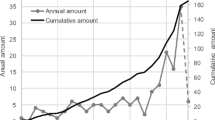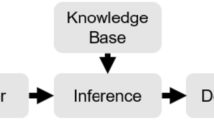Abstract
Fault tree analysis is one of the most useful techniques in reliability analysis of multistate systems that analyze and handle complex systems via Monte Carlo simulations or mathematical approaches. Traditional fault tree cannot depict the exact evaluation of components and systems failures with respect to simplex analysis. On the other hand, the exact evaluation of system reliability with unknown data owning to components and elements is still difficult. Therefore, in this paper, in order to overcome this problem as for the quantitative analysis of fault trees, the reliability analysis of a multistate system (i.e. Launch Emergency Detection System) based on fault tree analysis and fuzzy failure rates is studied. Accordingly, using fuzzy arithmetic, events time-to-failure are generated and then the Top Event time to failure is calculated. Finally, the results of the analytical solution are compared with the results attained by presented approach and shows that, in spite of less effort and time consuming, this method has more accuracy and suitable for all real industrial and complex systems. This paper has further developed the method of FTA for the most generic case where both the system and the components have multiple failure states.




Similar content being viewed by others
References
Andrews JD, Dunnett SJ (2000) Event-tree analysis using binary decision diagrams. IEEE Trans Reliab 49(2):230–238
Baraldi P et al (2010) An hybrid Monte Carlo and fuzzy logic method for maintenance modelling. In: 38th Esreda Seminar
Barlow RE, Wu AS (1978) Coherent systems with multi-state components. Math Oper Res 3(4):275–281
Bechta DJ, Bavuso SJ, Boyd MA (1992) Dynamic fault-tree models for fault-tolerant computer systems. IEEE Trans Reliab 41(3):363–377
Bobbio A, Raiteri DC (2004). Parametric fault trees with dynamic gates and repair boxes. In: Reliability and maintainability, 2004 Annual Symposium-RAMS, IEEE
Bobbio A et al (2001) Improving the analysis of dependable systems by mapping fault trees into bayesian networks. Reliab Eng Syst Saf 71(3):249–260
Bowles JB, Pelaez CE (1995) Application of fuzzy logic to reliability engineering. Proc IEEE 83(3):435–449
Caldarola L (1980) Fault tree analysis with multistate components. In: Apostolakis G, Garribba S, Volta G (eds) Synthesis and analysis methods for safety and reliability studies. Springer, US, pp 199–248
Cates G, Stromgren C, Cirillo W, Goodliff K (2012) Launch and assembly reliability analysis for mars human space exploration missions. NASA Langley Research Center, Houston
Chandna R, Ram M (2014) Fuzzy reliability modeling in the system failure rates merit context. Int J Syst Assur Eng Manag 5(3):245–251
Chiacchio F et al (2011) An open-source application to model and solve dynamic fault tree of real industrial systems. In: 5th International conference on 2011 IEEE software, knowledge information, industrial management and applications (SKIMA)
Dubois D et al (1988) Possibility theory: an approach to computerized processing of uncertainty, vol 2. Plenum Press, New York
Durga Rao K, Sanyasi Rao VVS, Verma AK, Srivisya A (2010) Dynamic fault tree analysis: simulation approach. In: Faulin J, Juan AA, Martorell S, Ramírez-Márquez J-E (eds) Simulation methods for reliability and availability of complex systems. Springer, London, pp 41–64
Ebrahimipur V et al (2011) Reliability optimization of multi-state weighted k-out-of-n systems by fuzzy mathematical programming and genetic algorithm. Int J Syst Assur Eng Manag 2(4):312–318
Ekrami Y, Cook JS (2011) Max launch abort system (MLAS) pad abort test vehicle (PATV) II attitude control system (ACS) integration and pressurization subsystem dynamic random vibration analysis. NASA Lyndon B. Johnson Space Center, Houston, p 77058
Farsi MA, Najafi M (2015) Reliability estimation of multi-state system based on fault tree analysis. Modares Mech Eng 15(1):257–266
Finkelstein M (2008) Failure rate modelling for reliability and risk. Springer, New York
Flage R et al (2013) Probability and possibility-based representations of uncertainty in fault tree analysis. Risk Anal 33(1):121–133
Gao P et al (2013) Dynamic reliability analysis of mechanical components based on equivalent strength degradation paths. Strojniški Vestnik-Journal of Mechanical Engineering 59(6):387–399
Gulati R, Dugan JB (1997) A modular approach for analyzing static and dynamic fault trees. In: Reliability and maintainability symposium proceedings annual 1997 IEEE
Hanson JM, Hill AD, Beard BB (2012) Launch vehicle failure dynamics and abort triggering analysis. NASA Marshall Space Flight Center, Huntsville, p 35812
Heyman J (1998) Structural analysis: a historical approach. Cambridge University Press, Cambridge
Huang X (1984) The generic method of the multistate fault tree analysis. Microelectron Reliab 24(4):617–622
Huang CY, Chang YR (2007) An improved decomposition scheme for assessing the reliability of embedded systems by using dynamic fault trees. Reliab Eng Syst Saf 92(10):1403–1412
Janan X (1985) On multistate system analysis. IEEE Trans Reliab 34(4):329–337
Kacprzyk J, Onisawa T (1995) Reliability and safety analyses under fuzziness. Springer, New York
Kai Y (1990) Multistate fault-tree analysis. Reliab Eng Syst Saf 28(1):1–7
Kapur KC (2007) Reliability and maintainability. In: Salvendy G (ed) Handbook of industrial engineering: technology and operations management, 3rd edn. Wiley, New York, pp 1921–1955
Lindhe A, Norberg T, Rosen L (2012) Approximate dynamic fault tree calculations for modelling water supply risks. Reliab Eng Syst Saf 106:61–71
Liu YW, Kapur KC (2008) New models and measures for reliability of multi-state systems. In: Misra KB (ed) Handbook of performability engineering. Springer, London, pp 431–445
Li YF et al (2012) A new fAult tree AnAlysis method: fuzzy dynAmic fAult tree AnAlysis nowA metodA AnAlizy drzewA uszkodzeń: rozmytA AnAlizA dynAmicznego drzewA uszkodzeń. Eksploatacja i Niezawodnosc 14(3)
Mahmood Y et al (2013) Fuzzy fault tree analysis: a review of concept and application. Int J Syst Assur Eng Manag 4(1):19–32
Misra KB (2008) Handbook of performability engineering. Springer, New York
Modarres M, Kaminskiz M, Krivstov V (1999) Realiability engineering and risk analysis: a practical guide, vol 55. CRC Press, Boca Raton
Natvig B (2010) Multistate systems reliability theory with applications. Wiley, New York
Ramirez-Marquez JE, David WC (2007) Multi-state component criticality analysis for reliability improvement in multi-state systems. Reliab Eng Syst Saf 92(12):1608–1619 (Special Issue on ESREL 2005)
Rausand M, Øien K (1996) The basic concepts of failure analysis. Reliab Eng Syst Saf 53:73–83
Rausand M, Høyland A (2004) System reliability theory: models, statistical methods, and applications, vol 396. Wiley, New York
Ruijun Z et al (2016) Reliability evaluation of a multi-state system based on interval-valued triangular fuzzy bayesian networks. Int J Syst Assur Eng Manag 7(1):16–24
Shrestha M, Xing L, Xu H (2010) Complete sequence generation algorithm for reliability analysis of dynamic systems with sequence-dependent failures
Twigg DW et al (2000) Modeling mutually exclusive events in fault trees. In: Proceedings of the annual reliability and maintainability symposium, pp 8–13
Twigg DW, Ramesh AV, Sharma TC (2000) Modeling event dependencies using disjoint sets in fault trees. In: Proceedings of the 18th international system safety conference, pp 275–279
Vesely B (2006) Fault tree analysis (FTA): concepts and applications. NASA Document. http://www.Hq.Nasa.Gov/Office/Codeq/Risk/Ftacourse
Vishwakarma Y, Sharma SP (2016) Uncertainty analysis of an industrial system using intuitionistic fuzzy set theory. Int J Syst Assur Eng Manag 7(1):73–83
Williams Hayes PS (2008) Crew exploration vehicle launch abort system flight test overview. NASA Dryden Flight Research Center, Edwards, California, p 93523
Wu B (2013) Reliability analysis of dynamic systems: efficient probabilistic methods and aerospace applications. Elsevier Science, Amsterdam
Xing L, Amari SV (2008a) Fault tree analysis. In: Misra KB (ed) Handbook of performability engineering. Springer, London, pp 595–620
Xing L, Amari SV (2008b) Reliability of phased-mission systems. In: Misra KB (ed) Handbook of performability engineering. Springer, London, pp 349–368
Yingkui G, Jing L (2012) Multi-state system reliability: a new and systematic review. Proc Eng 29:531–536
Zadeh LA (1965) Fuzzy sets. Inf Control 8(3):338–353
Zadeh L (1978) Fuzzy sets as a basis for a theory of possibility. Fuzzy Sets Syst 1:3–28
Zio E (2009) Reliability engineering: old problems and new challenges. Reliab Eng Syst Saf 94(2):125–141
Zio E (2013) The Monte Carlo simulation method for system reliability and risk analysis. Springer, New York
Zio E, Pedroni N (2010) Reliability estimation by advanced Monte Carlo simulation. In: Faulin J, Juan AA, Martorell S, Ramírez-Márquez J-E (eds) Simulation methods for reliability and availability of complex systems. Springer, London, pp 3–39
Zonouz SA, Miremadi SG (2006) A fuzzy-Monte Carlo simulation approach for fault tree analysis. In: Reliability and maintainability symposium, RAMS’06. Annual. 2006. IEEE
Author information
Authors and Affiliations
Corresponding author
Appendix 1
Rights and permissions
About this article
Cite this article
Nadjafi, M., Farsi, M.A. & Jabbari, H. Reliability analysis of multi-state emergency detection system using simulation approach based on fuzzy failure rate. Int J Syst Assur Eng Manag 8, 532–541 (2017). https://doi.org/10.1007/s13198-016-0563-7
Received:
Revised:
Published:
Issue Date:
DOI: https://doi.org/10.1007/s13198-016-0563-7




